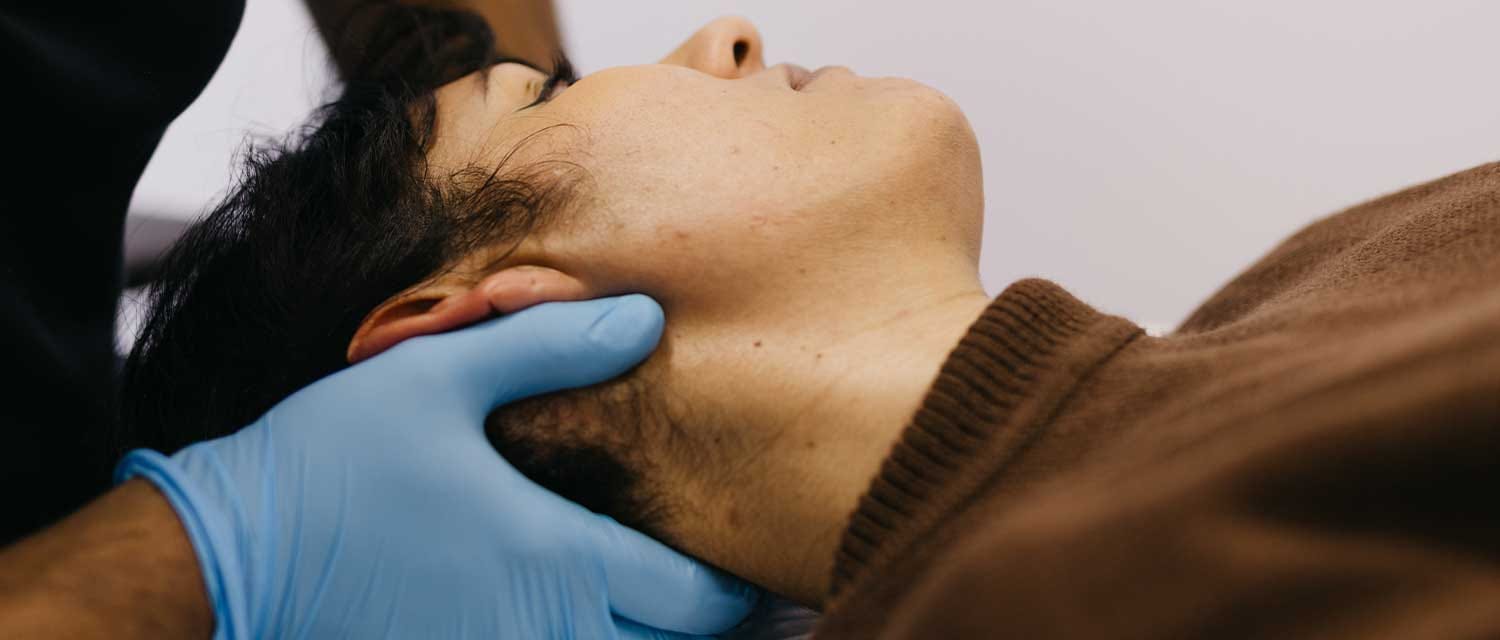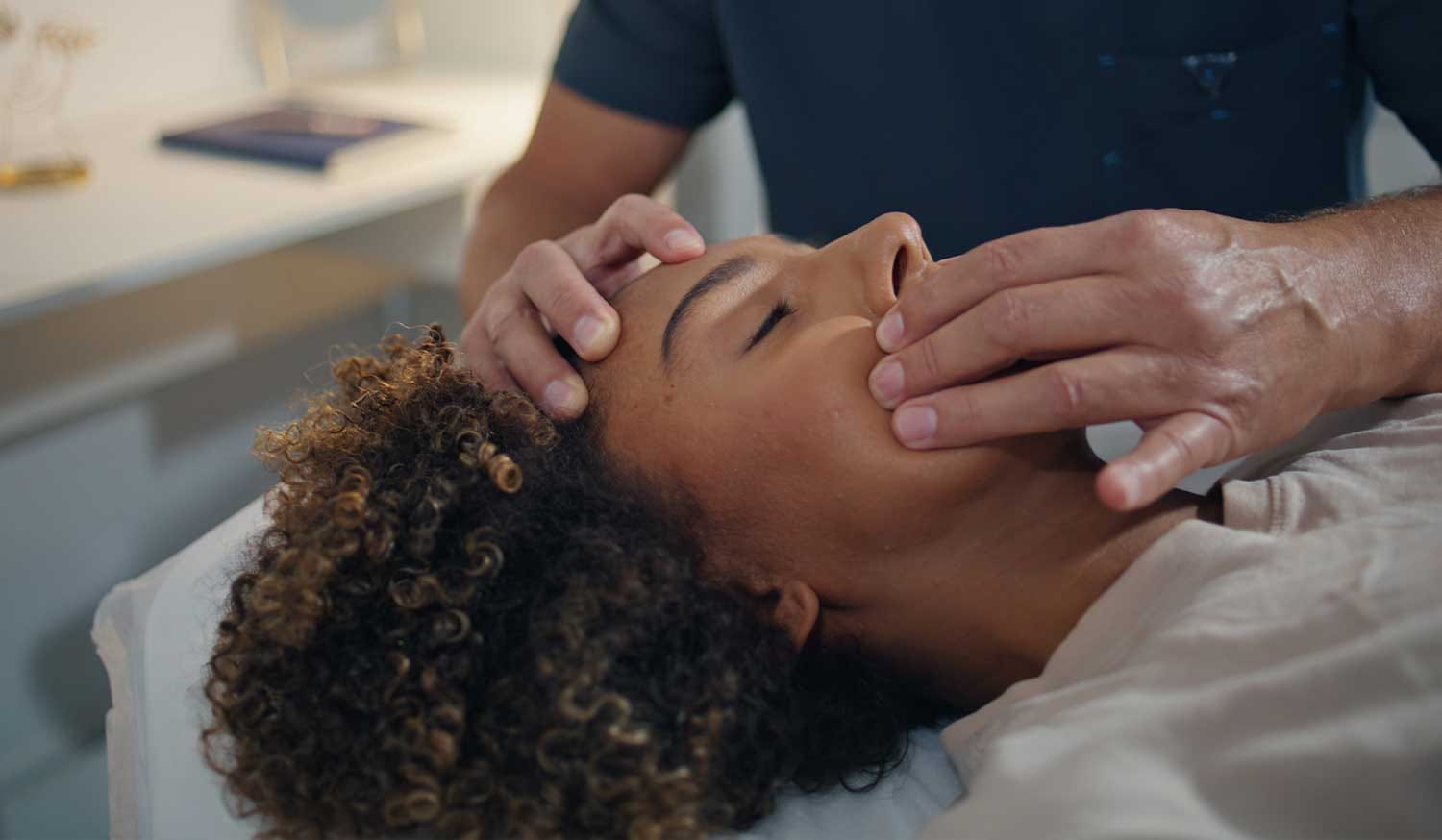Discover why TMJ disorders are frequently misdiagnosed and how MHV Clinic’s expert osteopathy approach ensures accurate diagnosis and effective relief.

Temporomandibular joint disorder (TMJ or TMD) affects millions of people worldwide, yet it remains notoriously under-recognised in both medical and dental settings. As a result, patients often endure months—or even years—of ineffective treatments before finding true relief from the NHS. Consequently, understanding the nuances of TMJ and adopting a musculoskeletal perspective is vital to avoid misdiagnosis and deliver targeted care.
Fortunately, osteopathy—a manual therapy system regulated in the UK by the General Osteopathic Council—offers a holistic framework ideally suited to TMJ assessment and treatment, as Regulated by the Professions. At MHV Clinic, our team of registered osteopaths utilises evidence-based protocols to accurately identify TMJ dysfunction and provide targeted interventions, ensuring patients receive the correct diagnosis from the outset.
Osteopathy is a regulated health profession that emphasises the interrelationship between the body’s structure—particularly the musculoskeletal system—and its function ASA. Practitioners, known as osteopaths, undergo rigorous training in anatomy, physiology, and manual therapy techniques before registering with the General Osteopathic Council (GOsC), the statutory body established under the Osteopaths Act 1993, Which Regulates Professions.
Osteopaths employ a range of interventions—including articulation, soft-tissue manipulation, and exercise prescription—to address biomechanical imbalances and promote the body’s innate ability to heal ASA. Moreover, they are trained to recognise “red-flag” symptoms that warrant onward medical referral, ensuring patient safety remains paramount ASA.
Firstly, TMJ disorder manifests with a broad spectrum of symptoms: jaw pain, ear aches, headaches, clicking or popping noises, and even dizziness NHS. Because these signs overlap with conditions managed by dentists, ENT specialists, neurologists, and physiotherapists, patients may be shuttled between practitioners who each address only part of the problem.
Moreover, standard dental evaluations often focus on occlusal (bite) issues or dental pathologies, inadvertently minimising contributions from posture, cervical spine mechanics, and muscle tension Royal Berkshire NHS Foundation Trust. As a result, joint-centric treatments (e.g., splints) may relieve some discomfort but fail to correct underlying musculoskeletal dysfunction, perpetuating a cycle of pain.
Additionally, psychosocial stress and poor posture play crucial roles in TMJ dysfunction. Stress-induced teeth clenching and forward-head postures heighten strain on the masticatory muscles, yet these elements are rarely assessed in isolation by traditional dental or ENT clinics Wikipedia. Consequently, therapy aimed solely at the jaw joint may overlook contributing factors emanating from the neck and shoulders.
Consequently, patients may cycle through specialists without ever addressing the root musculoskeletal drivers of their symptoms.
At MHV Clinic, our osteopaths begin with a detailed case history, exploring dental, postural, and psychosocial factors. We then perform a comprehensive musculoskeletal and cranial examination, assessing jaw range of motion, cervical spine alignment, and soft-tissue tension to build a holistic diagnostic picture.
Importantly, all treatment claims at MHV Clinic adhere to the ASA’s AdviceOnline for osteopathy, which permits practitioners to claim efficacy for joint pain—a category that encompasses TMJ conditions—as long as robust evidence supports the intervention, as per the ASA. By aligning with ASA guidelines, we ensure our communications remain truthful, balanced, and free from misleading promises.

Step 1: Initial Contact & Screening
Patients complete an intake questionnaire that flags previous misdiagnoses and identifies pertinent “red flags” (e.g., trauma, systemic disease), prompting immediate referral if required.
Step 2: Osteopathic Evaluation
A 60-minute consultation involves:
Step 3: Tailored Treatment Plan
Within 24–48 hours, patients receive a personalised plan that combines in-clinic hands-on sessions with home exercise routines.
Step 4: Ongoing Support & Review
Every two weeks, progress is evaluated, and interventions are adjusted to ensure continued improvement and prevent relapse.
Patient A, a 34-year-old graphic designer, suffered two years of right-sided ear pain and headaches. After five dental interventions and multiple ENT visits, her symptoms persisted. At MHV Clinic, our osteopath identified forward-head posture and hypertonic masseter muscles as primary drivers of her TMJ pain. Through a six-week osteopathic programme—combining joint articulation, soft-tissue work, and postural exercises—Patient A reported an 80% reduction in pain and fully restored jaw function.
While osteopathy excels at musculoskeletal interventions, we also recognise when collaboration is necessary. Therefore, we maintain close links with dental specialists, physiotherapists, and ENT consultants, ensuring our patients benefit from a truly integrated care pathway.
In summary, TMJ disorder is frequently misdiagnosed due to its complex symptomatology and the siloed nature of traditional healthcare pathways. However, osteopathy offers a uniquely comprehensive lens—one that considers joint mechanics, muscle function, posture, and stress. At MHV Clinic, we employ this holistic methodology to deliver accurate diagnoses and personalised treatment plans, ensuring patients regain pain-free function and a high quality of life.
If you have been struggling with persistent jaw pain or have received inconclusive treatments elsewhere, consider consulting our expert osteopaths. With MHV Clinic’s osteopathy services, you can finally experience the relief you deserve.
References: